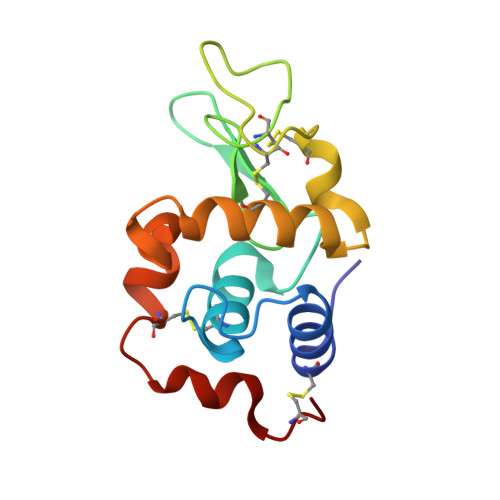Uv Laser-Excited Fluorescence as a Tool for the Visualization of Protein Crystals Mounted in Loops.
Vernede, X., Lavault, B., Ohana, J., Nurizzo, D., Joly, J., Jacquamet, L., Felisaz, F., Cipriani, F., Bourgeois, D.(2006) Acta Crystallogr D Biol Crystallogr 62: 253
- PubMed: 16510972
- DOI: https://doi.org/10.1107/S0907444905041429
- Primary Citation of Related Structures:
2C8O, 2C8P, 2C8Q, 2C8R - PubMed Abstract:
Structural proteomics has promoted the rapid development of automated protein structure determination using X-ray crystallography. Robotics are now routinely used along the pipeline from genes to protein structures. However, a bottleneck still remains. At synchrotron beamlines, the success rate of automated sample alignment along the X-ray beam is limited by difficulties in visualization of protein crystals, especially when they are small and embedded in mother liquor. Despite considerable improvement in optical microscopes, the use of visible light transmitted or reflected by the sample may result in poor or misleading contrast. Here, the endogenous fluorescence from aromatic amino acids has been used to identify even tiny or weakly fluorescent crystals with a high success rate. The use of a compact laser at 266 nm in combination with non-fluorescent sample holders provides an efficient solution to collect high-contrast fluorescence images in a few milliseconds and using standard camera optics. The best image quality was obtained with direct illumination through a viewing system coaxial with the UV beam. Crystallographic data suggest that the employed UV exposures do not generate detectable structural damage.
- LCCP, UMR 5075, IBS-CEA/CNRS/UJF, Grenoble, France.
Organizational Affiliation:
















